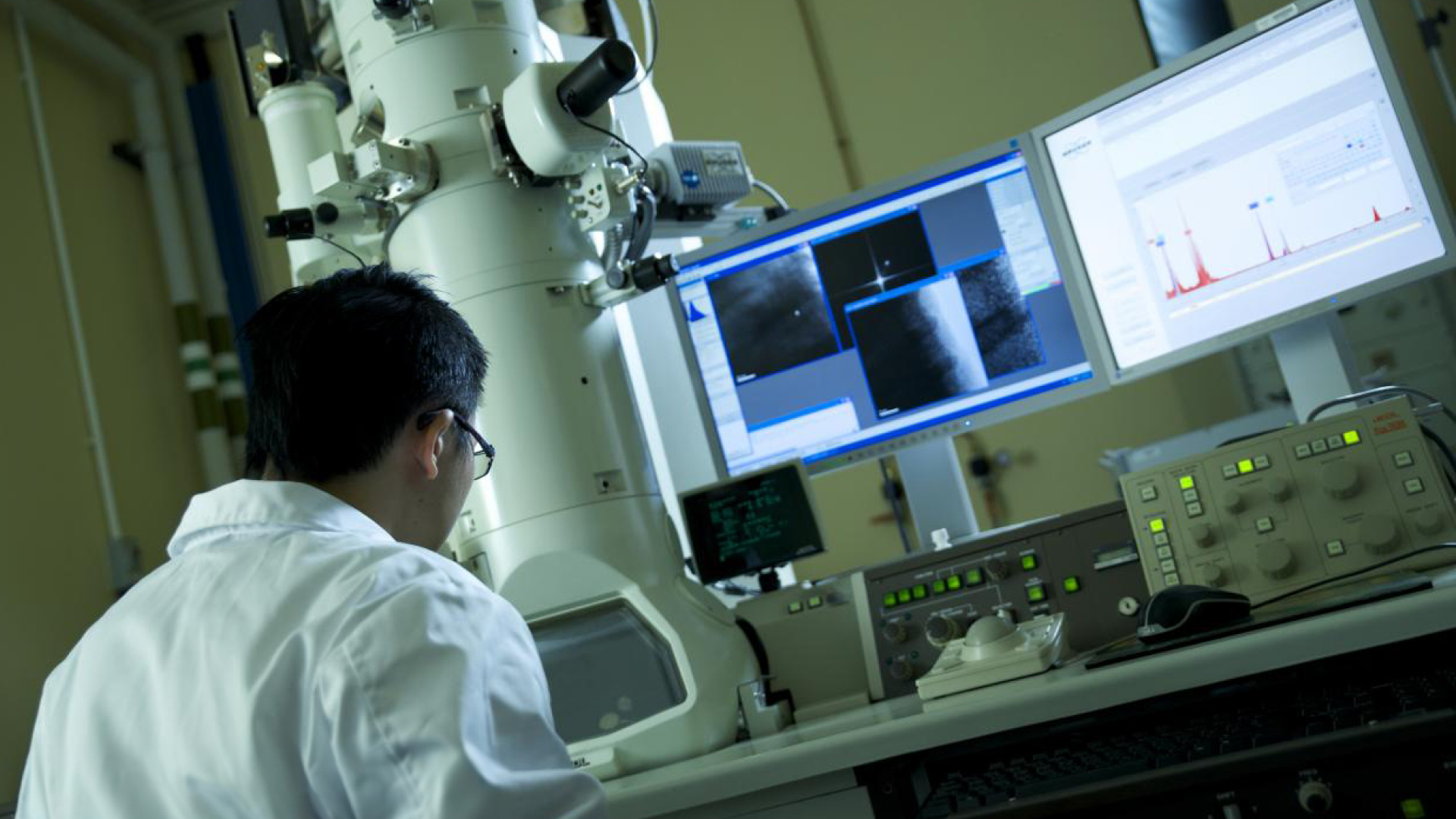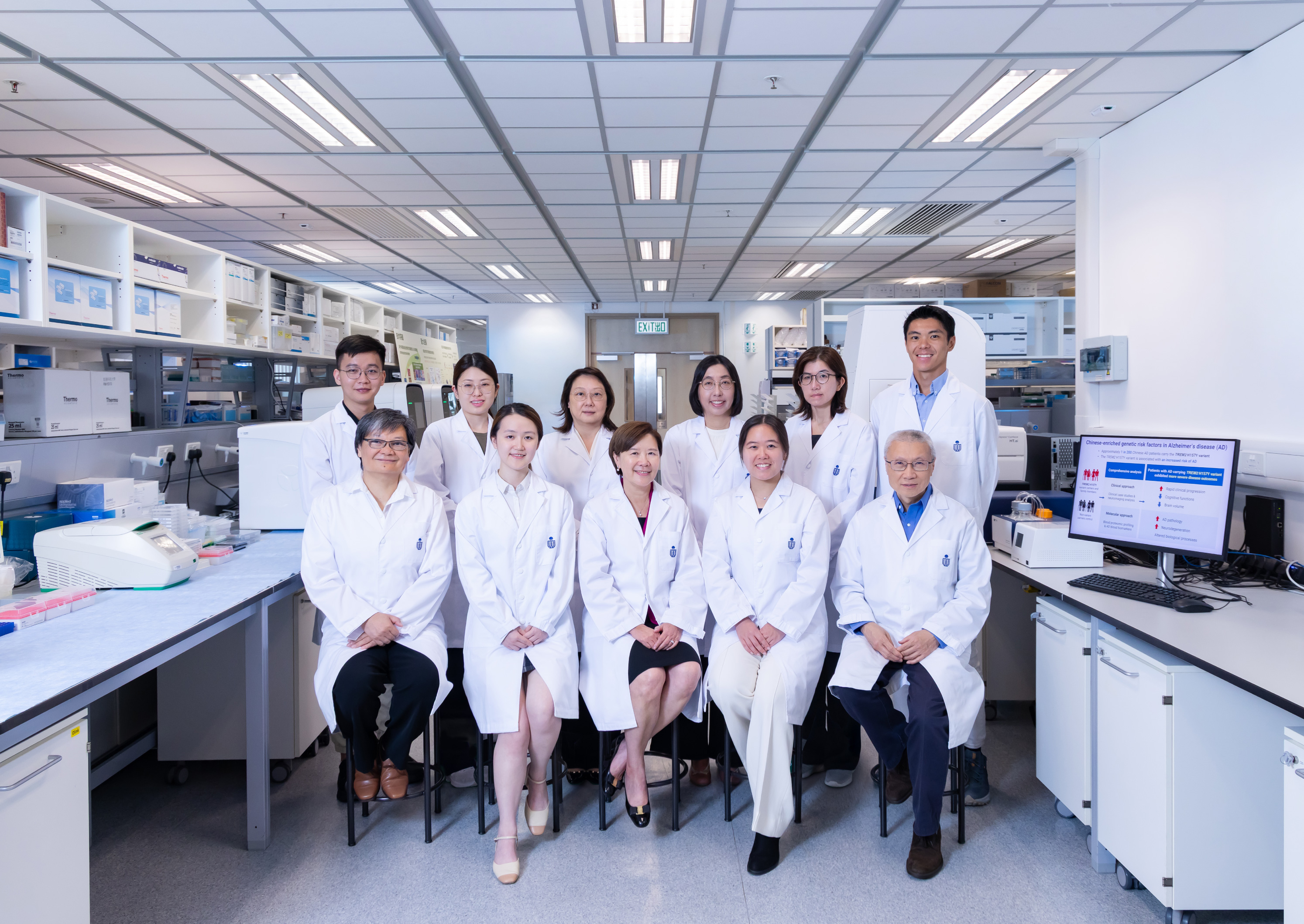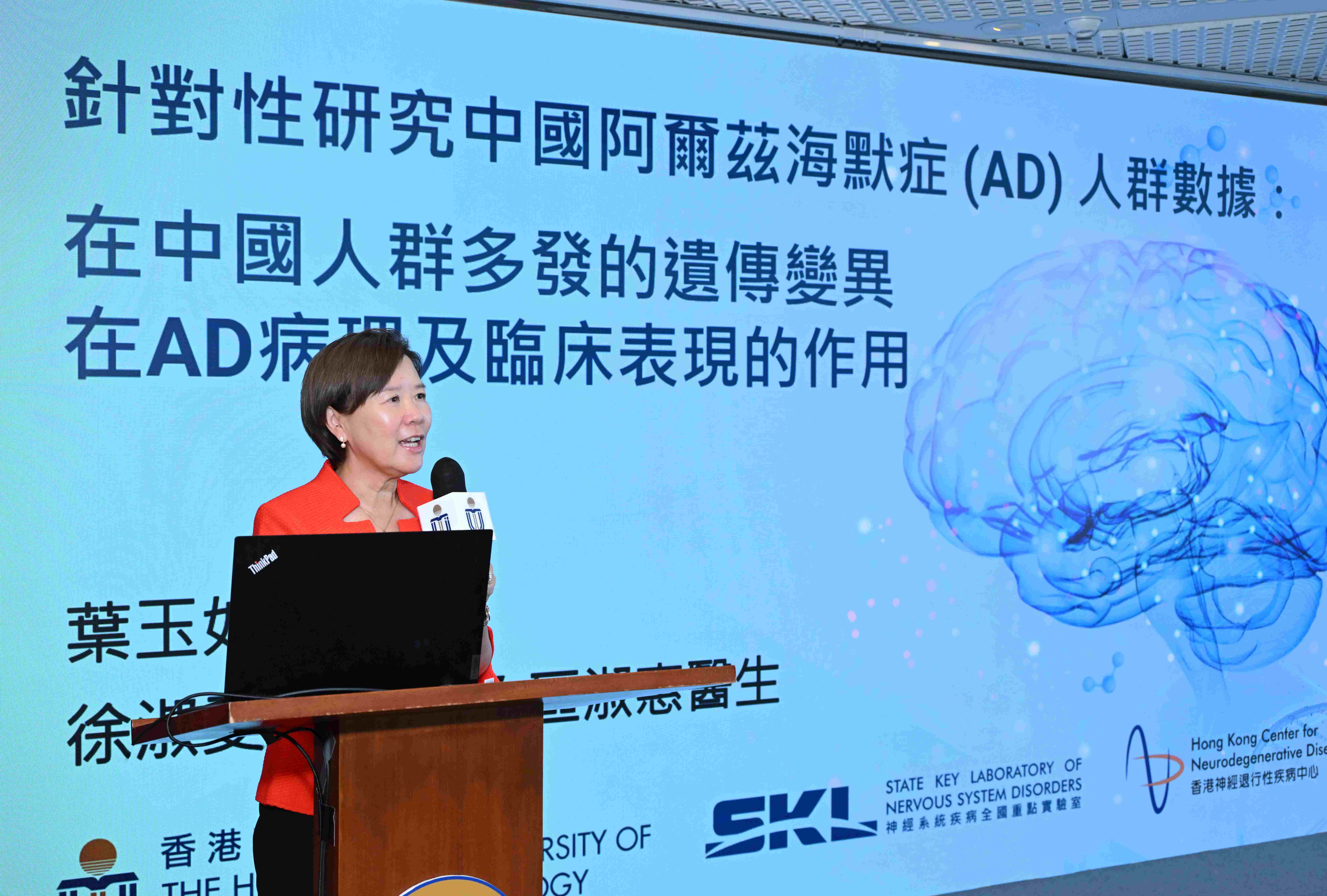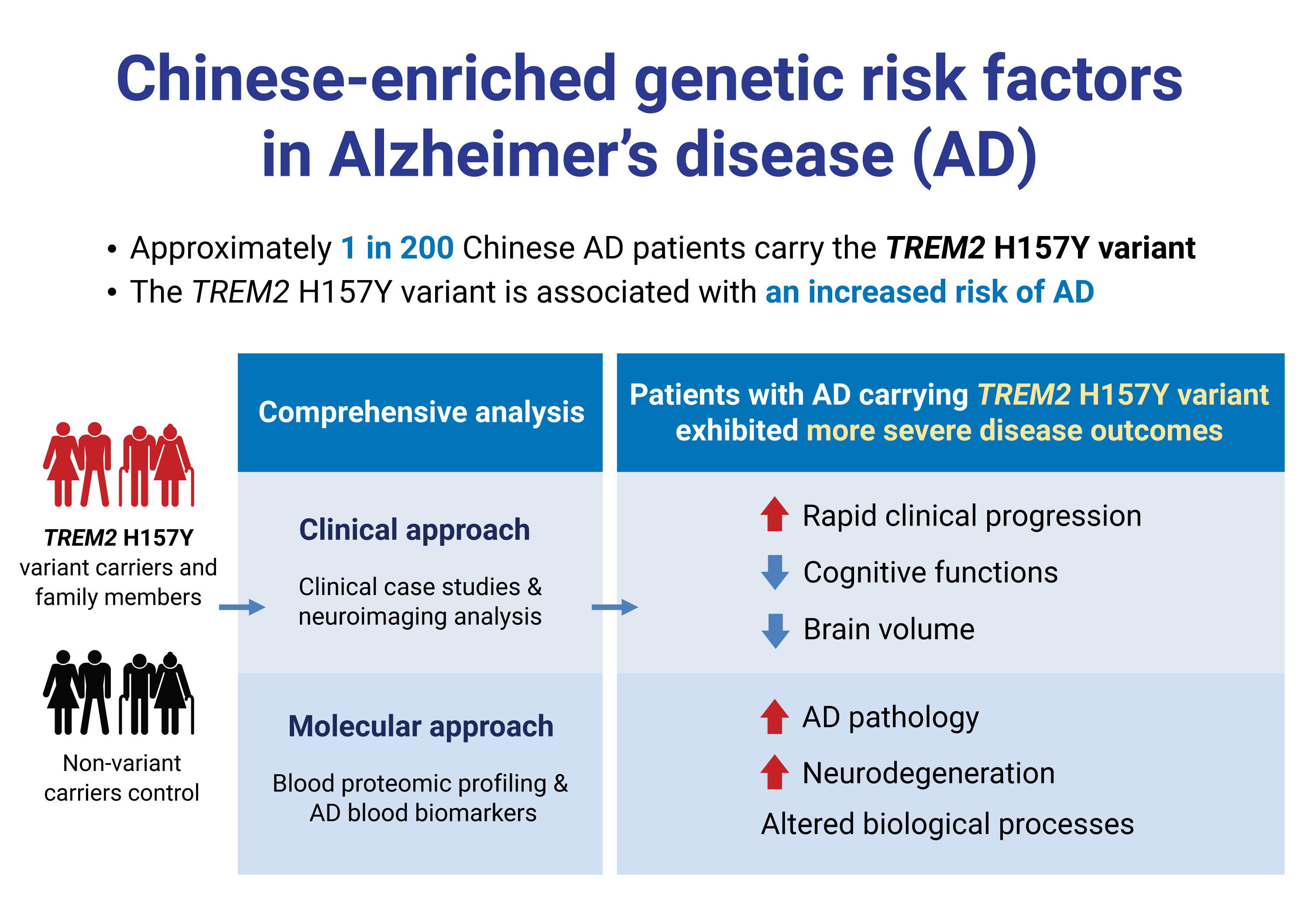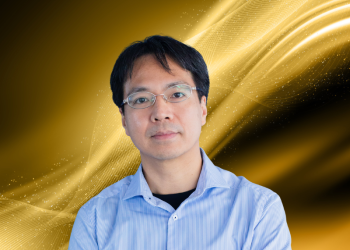HKUST Scientists Reveal Critical Impacts of a Chinese Genetic Risk Factor in Alzheimer’s Disease
A landmark study conducted by The Hong Kong University of Science and Technology (HKUST) has demonstrated that a genetic variant, TREM2 H157Y, significantly increases the risk of Alzheimer’s disease (AD) in individuals of ethnic Chinese descent. The research reveals that this variant confers a risk level comparable to that of the strongest known genetic risk factor for AD, APOE-ε4, and is associated with more rapid clinical progression and more severe neurodegeneration.
This is the first in the field to conduct an in-depth family-based clinical case study on a Chinese-enriched genetic risk factor for AD, the TREM2 H157Y variant. The findings, published in Alzheimer’s & Dementia: The Journal of the Alzheimer’s Association, have profound implications for disease monitoring and patient management.
Highlights of the findings:
The TREM2 H157Y variant is associated with an increased risk of AD.
The TREM2 H157Y variant is found in approximately 1 in 200 ethnic Chinese individuals with AD.
Patients with the TREM2 H157Y variant experience more rapid clinical progression.
AD patients with the TREM2 H157Y variant exhibit more severe disease outcomes.
Changes in blood protein biomarkers in TREM2 H157Y variant carriers revealed specific underlying biological processes, highlighting their potential use in monitoring disease progression and developing personalized disease management.
AD currently affects approximately 10 million people in Chinese Mainland, with the number projected to rise to around 50 million by 2050. Genetic factors account for 60-80% of the risk for late-onset AD, with the APOE gene being the most extensively studied, followed by TREM2. Both genetic risk factors exhibit significant differences in prevalence and risk effects across different ethnic populations. In particular, the most studied TREM2 genetic variant, R47H, is enriched in European populations but not found in Chinese populations. As most AD genetic studies have been conducted in European populations, it is crucial to undertake such studies on diverse populations.
To address this gap, the Hong Kong Center for Neurodegenerative Diseases (HKCeND) launched its Biobank (HKCeND Biobank) for AD research. Led by HKUST and in collaboration with hospitals in Hong Kong, this biobank collects and consolidates comprehensive clinical, neuroimaging, and multi-omics data from individuals of ethnic Chinese origin. This makes it a critical resource for investigating Chinese-enriched genetic factors such as the TREM2 H157Y variant.
This research on the genetic variant was conducted by a team led by Prof. Nancy IP, President and the Morningside Professor of Life Science at HKUST. She is also the Director of the State Key Laboratory of Nervous System Disorders (SKLNSD) at HKUST and the Center Director of the InnoHK HKCeND.
The study resulted in several novel findings. The clinical case study showed that TREM2 H157Y variant carriers with the APOE-ε4 risk factor exhibit more rapid clinical progression in the early stages of the disease, compared to non-carriers. Cognitive assessments, neuroimaging, and AD blood biomarker analyses indicated that AD patients carrying the TREM2 H157Y variant experience significantly worsened cognitive functions, more severe neurodegeneration, and more severe AD pathology. Additionally, blood protein profile analysis revealed alterations in immune, vascular, and bone-related biological processes in these individuals. This highlights the use of blood biomarkers to investigate how genetic risk factors influence AD pathology, generating new insights into AD biology and novel therapeutic development.
Prof. Ip remarked, “This study is the first to demonstrate that the TREM2 H157Y genetic variant is associated with more severe AD pathology and neurodegeneration. The prevalence of the TREM2 H157Y variant among ethnic Chinese individuals emphasizes the importance of conducting genetic studies in the Chinese population.” She added, “This study also highlights the critical clinical implications of the genetic variant for timely intervention and personalized disease management. Our research benefits from public participation and close collaboration between clinicians and scientists, effectively linking scientific findings to improved patient outcomes.”
The study was supported by multiple funding bodies, including the InnoHK initiative of the Innovation and Technology Commission (ITC) of the Government of the Hong Kong Special Administrative Region of the People’s Republic of China, the Areas of Excellence Scheme of the University Grants Committee, the Research Grants Council (RGC) of the Hong Kong Special Administrative Region of the People’s Republic of China, the ITC Grant, the Chow Tai Fook Charity Foundation, the National Natural Science Foundation of China (NSFC)/RGC Joint Research Scheme, and the SIAT-HKUST Joint Laboratory for Brain Science, under the Chinese Academy of Sciences. The clinical case study was conducted in collaboration with Prof. Timothy Kwok from the Prince of Wales Hospital, The Chinese University of Hong Kong.
About The Hong Kong University of Science and Technology
The Hong Kong University of Science and Technology (HKUST) (https://hkust.edu.hk/) is a world-class university that excels in driving innovative education, research excellence, and impactful knowledge transfer. With a holistic and interdisciplinary pedagogy approach, HKUST was ranked 3rd in the Times Higher Education’s Young University Rankings 2024, 19th Worldwide and No.1 in Hong Kong in Times Higher Education’s Impact Rankings 2025. Thirteen HKUST subjects were ranked among the world’s top 50 in the QS World University Rankings by Subject 2025, with “Data Science and Artificial Intelligence” holding the 17th place, maintaining its position as first in Hong Kong. Our graduates are highly competitive, consistently ranking among the world’s top 30 most sought-after employees. In terms of research and entrepreneurship, over 80% of our work was rated “Internationally excellent” or “world leading” in the latest Research Assessment Exercise 2020 of Hong Kong’s University Grants Committee. As of July 2025, HKUST members have founded over 1,900 active start-ups, including 10 Unicorns and 17 exits (IPO or M&A).
About InnoHK Hong Kong Center for Neurodegenerative Diseases
InnoHK Hong Kong Center for Neurodegenerative Diseases (HKCeND) was established under the government-funded InnoHK initiative. HKCeND harnesses the power of science to make a translational impact in the development of innovative diagnostic tools and therapeutic strategies for neurodegenerative diseases. Building on the pioneering work of HKUST’s State Key Laboratory of Nervous System Disorders led by neuroscientist Prof. Nancy Ip, HKCeND has fostered cross-institutional R&D collaboration with University College London and Stanford University. This interdisciplinary collaboration is bringing together prominent scientists in the areas of neuroscience, stem cell biology and artificial intelligence to advance cutting-edge research and deliver promising breakthroughs that improve and transform the lives of people worldwide.
For media enquiries, please contact:
PR and Media Team, Global Engagement and Communication Office
Email: media@ust.hk





